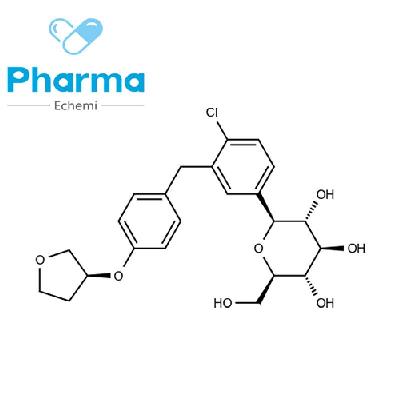-
Categories
-
Pharmaceutical Intermediates
-
Active Pharmaceutical Ingredients
-
Food Additives
- Industrial Coatings
- Agrochemicals
- Dyes and Pigments
- Surfactant
- Flavors and Fragrances
- Chemical Reagents
- Catalyst and Auxiliary
- Natural Products
- Inorganic Chemistry
-
Organic Chemistry
-
Biochemical Engineering
- Analytical Chemistry
-
Cosmetic Ingredient
- Water Treatment Chemical
-
Pharmaceutical Intermediates
Promotion
ECHEMI Mall
Wholesale
Weekly Price
Exhibition
News
-
Trade Service
Background: Dementia is a progressive neurodegenerative disease that affected 55 million people worldwide in 2015, adding nearly 10 million cases
per year.
Type 2 diabetes (T2D) is associated
with an increased risk of all-cause dementia, including its two main subtypes, Alzheimer's disease (AD) and vascular dementia (VaD).
The complex pathophysiology behind this relationship may involve insulin resistance (IR), hyperglycemia, neuroinflammation, and energy homeostasis changes
.
There have been studies
on the use of antidiabetic drugs (ADMs) to prevent and treat dementia, particularly AD.
The use of metformin (MET), thiazolidinedione (TZD), and subcutaneous insulin has been reported to improve cognitive function, while sulfonylureas (SU) and regular insulin have been associated with
an increased risk of dementia.
However, these correlations were not consistently observed
.
Inconsistencies in previous findings may be due to small sample sizes, short follow-up periods, heterogeneity of study population or treatment group comparisons, and inadequate
adjustment for confounders.
In addition, patient characteristics, such as obesity, may affect treatment effectiveness, but may also affect efficacy
.
We used the Veterans Administration Electronic Health Records (EHRs) to compare the effects
of three commonly used oral ADMs, MET, SU, and TZD on the onset of dementia in veterans with T2D.
Given the small number of untreated diabetics and healthier phenotypes, we used MET monotherapy as an active comparator
.
This setup also makes our study comparable to previous studies
.
Our findings provide evidence
for drug choice in patients with mild to moderate T2D who are at high risk of dementia.
Study Design and Methods: This is a prospective observational study conducted in a T2D population, using electronic medical records from all sites
of the Veterans Affairs healthcare system.
Patients with T2D who started ADM from 1 January 2001 to 31 December 2017 started ≥ 60 years and were free of dementia
.
SU monotherapy, TZD monotherapy and control (MET monotherapy)
were composed according to the prescription records.
Participants were required to undergo the designated treatment for at least 1 year
.
The primary outcome is all-cause dementia, and the two secondary outcomes are Alzheimer's disease and vascular dementia, defined by the International Classification of Diseases (ICD) Version 9 or ICD Version 10 code
.
The risk
of development outcomes was compared using a propensity score-weighted Cox proportional hazard model.
Results: Among 559 106 eligible veterans (mean age 65.
7 (SD 8.
7) years), the all-cause dementia rate was 8.
2 cases per 1000 person-years (95% confidence interval 6.
0~13.
7).
。 After at least 1 year of treatment, TZD monotherapy compared with MET monotherapy reduced the risk of all-cause dementia by 22% (HR 0.
78, 95% CI 0.
75 to 0.
81), MET and TZD combination therapy by 11% (HR 0.
89, 95% CI 0.
86 to 0.
93), and MET and SU combined with both drugs had a protective effect on all-cause dementia (HR 0.
91, 95% CI 0.
88~0.
95).
The risk of SU monotherapy was 12% higher (HR 1.
12, 95% CI 1.
09 to 1.
15).
Figure 1 Timeline and programme
of the study.
MET, metformin; SU, sulfonylureas; TZD, thiazolidinedione
.
Table 1 Estimated HRs and 95% CI coefficients
for the treatment of patients with T2D dementia with SU, TZD, MET and SU, MET and TZD, and SU and TZD compared to MET alone.
Table 2 Subgroup analysis of dementia event risk in ADM treatment comparison (MET monotherapy as a reference)
Conclusions: In patients with T2D, the use of TZD is associated with a lower risk of dementia, while the use of SU is associated
with a higher risk compared with the use of MET.
The addition of SU to MET or TZD can partially counteract its dementia effects
.
These findings may help with drug
selection for older patients with T2D at high risk of dementia.
Originally sourced: Tang X, Brinton RD, Chen Z, et al.
Use of oral diabetes medications and the risk of incident dementia in US veterans aged ≥60 years with type 2 diabetes.
BMJ Open Diabetes Res Care 2022 09; 10(5).







